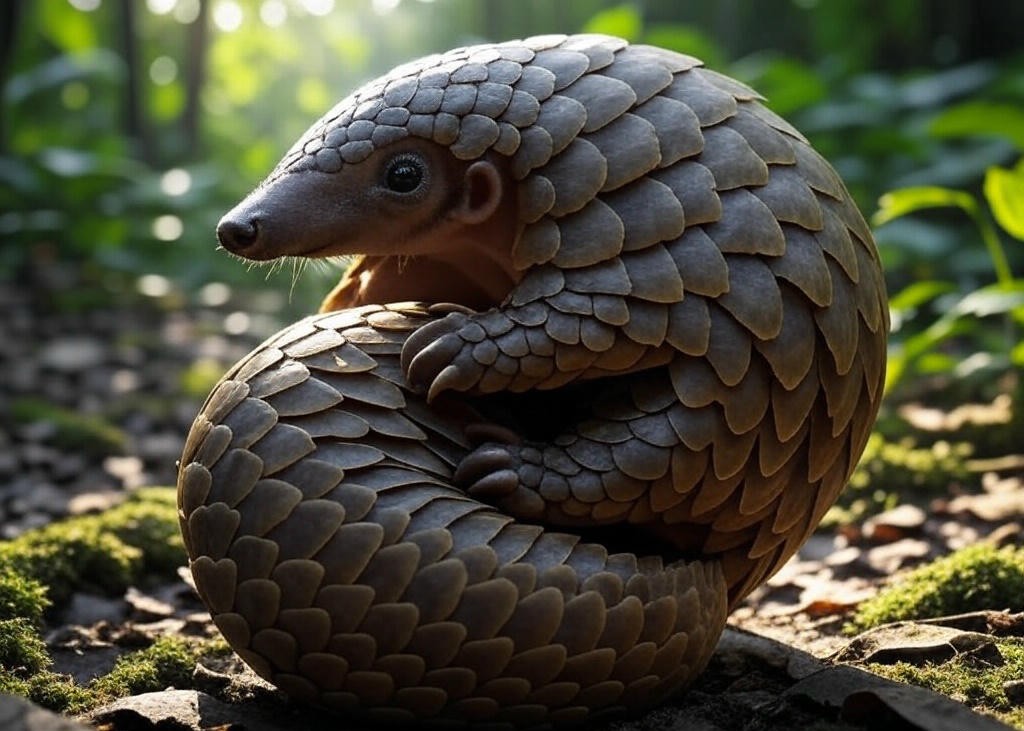Pangolins, often called "scaly anteaters," are the only mammals in the world covered in protective keratin scales. Found in parts of Africa and Asia, these shy, nocturnal creatures belong to the order Pholidota. There are eight species of pangolins, four in Africa and four in Asia, each adapted to its unique environment.
A pangolin’s most striking feature is its scales, which cover most of its body and act as a natural armor against predators. These scales are constantly growing, much like human fingernails, and are shed and replaced throughout their lives. Pangolins are insectivores, primarily feeding on ants and termites, which they locate using their acute sense of smell. Their long, sticky tongues—sometimes as long as their bodies—allow them to extract insects from nests with precision.
Despite their armored exterior, pangolins are surprisingly vulnerable. When threatened, they curl into a tight ball, relying on their scales for protection. This behavior is effective against natural predators like lions or tigers. Pangolins lack teeth and have poor eyesight, but their hearing and sense of smell are highly developed, aiding their survival in dense forests and grasslands.
Pangolins prove that scales aren’t just for reptiles
Pangolins have a slow metabolism and a low body temperature compared to other mammals, which helps them conserve energy in their often harsh habitats. They can consume up to 70 million insects annually, playing a crucial role in controlling pest populations. Their claws are specially adapted for digging into termite mounds and ant nests, and their muscular tails help them balance when climbing trees—especially for the arboreal species like the African tree pangolin.
Pangolins are primarily nocturnal, spending their days resting in burrows or hollow trees and emerging at night to forage. They can travel several kilometers in a single night in search of food, using their strong sense of smell to detect insect nests. Some species, like the ground pangolin, prefer open savannas, while others, like the Sunda pangolin, are more at home in dense rainforests.
Pangolins lead solitary lives, only coming together to mate. Females give birth to a single pup after a gestation period of about 120 days, and the baby pangolin, called a pangopup, rides on its mother’s tail for the first few months of life. This close bond ensures the pup learns essential survival skills before venturing out on its own.
